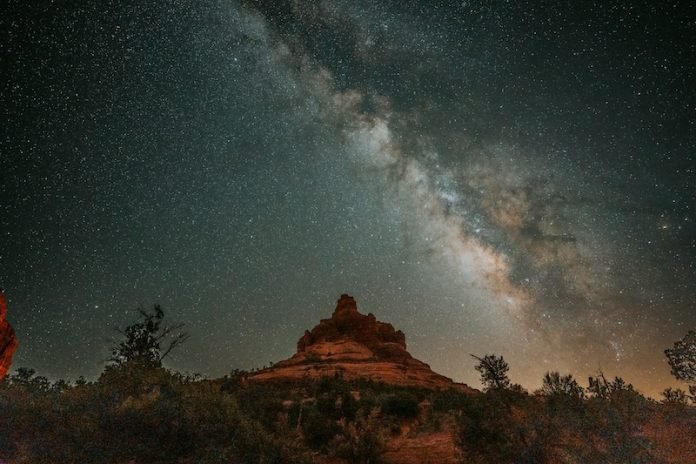
In a remarkable discovery last September, the James Webb Space Telescope (JWST) uncovered an ancient, massive galaxy named JWST-ER1g.
This galaxy, found to have formed when the universe was just 25% of its current age, showcases an extraordinary phenomenon known as an Einstein ring.
This occurs when the galaxy’s gravitational pull is so strong that it bends the light from objects behind it into a circle. This effect, predicted by Einstein’s theory of general relativity, is a vivid example of strong gravitational lensing.
The JWST-ER1g galaxy acts as a cosmic magnifying glass, allowing us to see the light from distant celestial bodies that would otherwise be hidden from us.
The formation of the Einstein ring provides scientists with a unique opportunity to study both the galaxy and the properties of the dark matter within it.
In analyzing the galaxy, researchers discovered that the total mass of the ring is made up of two main components: stars and dark matter. When the mass of the stars is subtracted, the remaining mass is attributed to dark matter.
Interestingly, the amount of dark matter in this case is more than what was expected. Hai-Bo Yu, a professor of physics and astronomy at the University of California, Riverside, and his team delve into this anomaly in their new research published in The Astrophysical Journal Letters.
The concept of a dark matter halo, an invisible cloud of matter that surrounds galaxies like JWST-ER1g, is central to their explanation. Although dark matter has never been directly detected, it is believed to constitute about 85% of all matter in the universe.
The team’s analysis suggests that as ordinary matter such as gas and stars falls into the galaxy’s dark matter halo, it compresses this halo, increasing its density. This higher density of dark matter could account for the unexpectedly large amount of dark matter mass observed.
Daneng Yang, a postdoctoral researcher and co-author of the study, points out that JWST-ER1g, being relatively young in cosmic terms, provides an excellent opportunity to study dark matter.
The perfect Einstein ring it forms allows scientists to accurately measure the total mass within the ring, which is crucial for testing theories about dark matter properties.
Launched on Christmas Day in 2021, the JWST is an advanced orbiting infrared observatory designed to answer fundamental questions about the universe. It stands as the most significant and powerful space telescope ever built.
According to Yu, the JWST is set to bring us more surprises and insights into the early universe and the mysterious dark matter that permeates it.
This research not only offers new insights into the high density of dark matter in JWST-ER1g but also underscores the pivotal role of the JWST in exploring the cosmos.
As the telescope continues to peer into the depths of space, it is expected to uncover more about the formation of galaxies and the elusive nature of dark matter.
Supported by the John Templeton Foundation and the U.S. Department of Energy, this study is just one example of how new tools and persistent inquiry continue to push the boundaries of our understanding of the universe.
The research findings can be found in The Astrophysical Journal Letters.
Copyright © 2024 Knowridge Science Report. All rights reserved.



